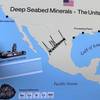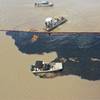SNAME 2009: New Safe Return to Port
On the Annual Meeting of the Society of Naval Architects and Marine Engineers (SNAME) Germanischer Lloyd (GL), will present a new Guideline for Safe Return to Port. The presentation by Andreas Ullrich, Dr. Daniel Povel and Dr. Urs Vogler "Safe Return to Port - Challenges Ahead for Passenger Ship Design" will give an overview about SOLAS regulations to Safe Return to Port and demonstrates influence on the design of future passenger ships. A software tool supporting the Safe Return to Port assessment is demonstrated. The new SOLAS regulations are a pro-active action of the International Maritime Organization (IMO) regarding the increasing size of passenger ships and the difficulties in safely evacuation of passengers. The Safe Return to Port regulations will imply a change of the design process for designers, ship builders, classification societies and national administrations.
"As a ship is its own best lifeboat, GL supports passenger vessel design with a Safe Return to Port service and helps ship designers, shipyards and ship owners to fulfil the new SOLAS requirements", said Andreas Ullrich, Ship Type Manager Passenger Ships.
The GL service analyses the Safe Return to Port capability of a ship design and helps establishing possible solutions, prior to classification. The service comprises of an early stage design support, an overall assessment of all essential systems and a detailed assessment of critical systems.
The IMO has defined performance requirements for the functionality of essential systems on passenger ships under predefined casualty scenarios. The SOLAS requirements to "Safe Return to Port" require for defined flooding as well as fire casualties the application of different and more risk based methods. The relevant amendments to SOLAS refer to both Chapter II-1(new regulation 8-1) and Chapter II-2 (regulations 21-22). The regulations are mandatory for passenger ships constructed on or after July 1, 2010, having a length of 393.7 ft or more or having three or more main vertical zones.
These vessels have to be able to return to port after a casualty case, not exceeding a defined flooding or fire casualty threshod, and provide all persons on board basic services in so-called "save areas". For fire casualty cases exceeding the casualty threshold but not exceeding one main vertical fire zone, systems for supporting orderly evacuation have to be available for three hours.
In addition to the increased safety for passengers and crew a ship design which is conform to Safe Return to Port regulations will offer further benefits for the operator. Not only the operation of the vessel will be more efficient and flexible through additional system capabilites but also the down time of systems during normal operation will be reduced to ensure a smooth operation of the vessel.
(www.gl-group.com)










